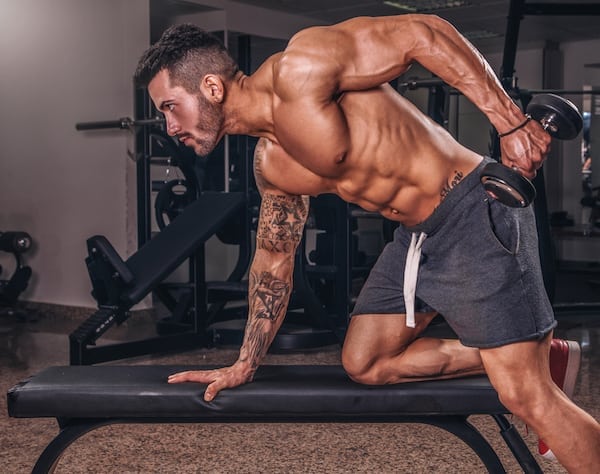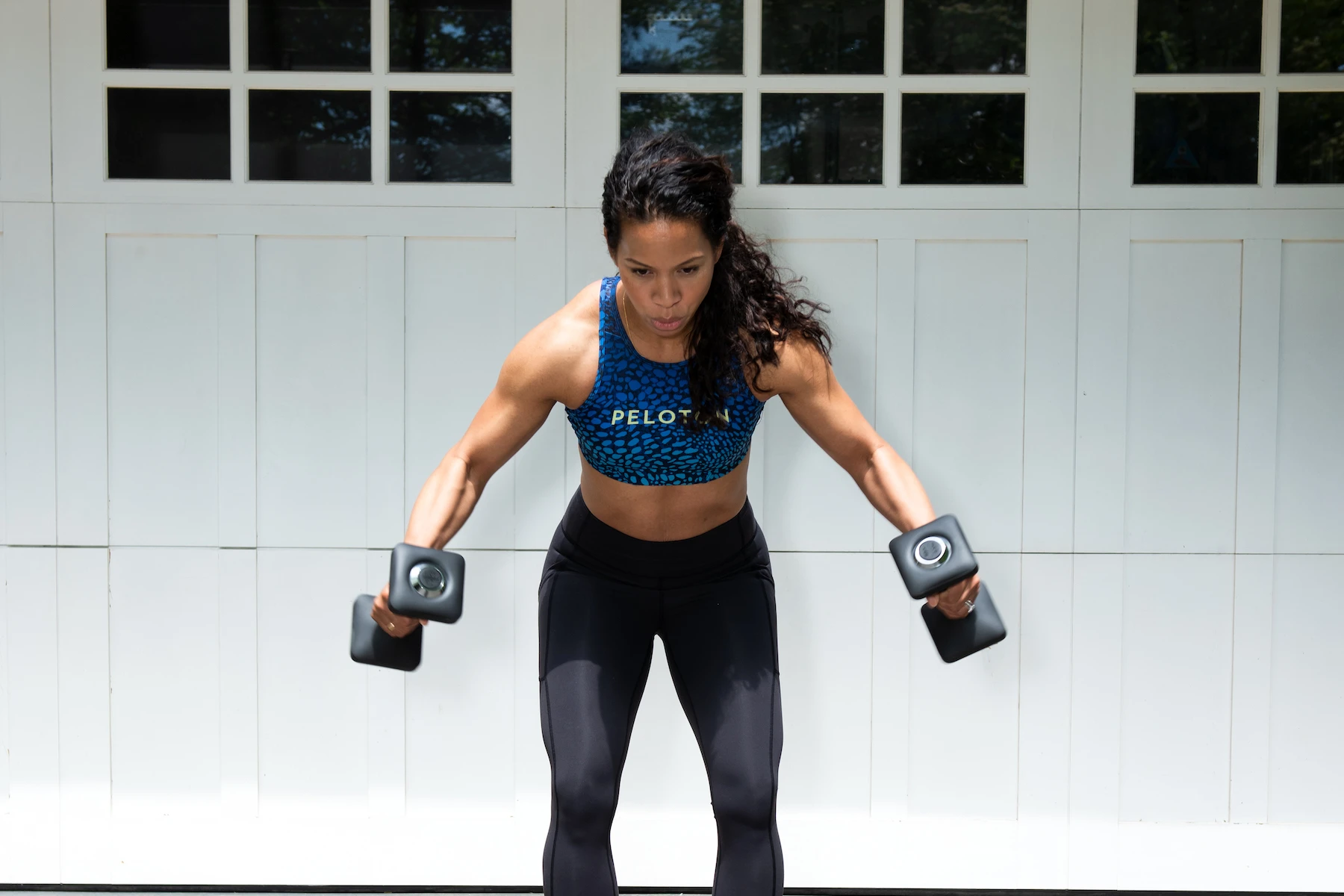In fitness and bodybuilding, knowing which muscles develop the fastest can significantly enhance workout outcomes. Typically, larger muscle groups such as the legs, chest, and back tend to grow quicker due to their substantial size and volume of muscle fibers. Today we will explore the characteristics of different muscle groups, their potential for growth, and effective strategies to stimulate rapid muscle development, helping you make informed training decisions.

Contents
Which Muscles Grow Fastest?
When it comes to muscle development, the rate at which muscles grow can vary significantly based on the individual’s body type, training regimen, and genetic predispositions. However, certain muscle groups generally tend to respond and grow faster than others, largely due to their size and the frequency with which they are used in daily activities. Here’s a closer look at some of the muscle groups that are known to grow the fastest:
1. Quadriceps:
The quadriceps are the large muscle group on the front of the thigh. They are heavily utilized in a multitude of daily activities such as walking, standing, and climbing stairs, as well as in sports that involve running and jumping. This frequent use can stimulate more growth, especially when targeted with exercises like squats, leg presses, and lunges.
2. Latissimus Dorsi:
The latissimus dorsi, or “lats,” are the large muscles of the back that contribute to wing-shaped appearances under the arms. They are involved in pulling movements and respond well to exercises like pull-ups, rows, and lat pulldowns. The size of the lats allows them to grow relatively quickly compared to smaller muscle groups.
3. Glutes:
The gluteal muscles are another large muscle group that tends to grow quickly. They are crucial for lower body strength and aesthetics, playing a key role in movements like squatting, deadlifting, and other hip-extension activities. Effective exercises for stimulating the glutes include hip thrusts, deadlifts, and squats.

4. Chest Muscles (Pectorals):
The chest muscles, or pectorals, are prominent and can also grow relatively quickly due to their size and the variety of exercises that target them effectively, such as bench presses, push-ups, and chest flies.
5. Biceps:
While not as large as some other muscle groups, biceps often show quick growth due to their role in many compound upper body exercises, as well as targeted workouts like curls. Their visibility also makes any growth more apparent.
6. Triceps:
The triceps are larger than the biceps and are involved in pushing movements. They respond well to exercises like tricep dips, push-downs, and overhead extensions.
Factors Influencing Muscle Growth
Muscle growth, also known as hypertrophy, is influenced by a variety of factors ranging from genetic predispositions to lifestyle choices. Here are the key elements that significantly impact the development of muscle mass:

1. Genetics:
Genetics play a foundational role in determining muscle fiber type, size, and growth potential. Some individuals are genetically predisposed to have a higher proportion of fast-twitch muscle fibers, which are more susceptible to growth. Genetic factors also influence how quickly muscles recover and adapt to stress, affecting overall muscle growth capabilities.
2. Nutrition:
Adequate nutrition is crucial for muscle growth. Proteins are the building blocks of muscle and thus, consuming sufficient amounts of protein is essential. Additionally, overall caloric intake must support the energy demands of training as well as the energy required for muscle repair and growth. Carbohydrates and fats also play significant roles by providing the necessary energy and supporting overall health.
3. Training Intensity and Volume:
The intensity and volume of exercise are critical in stimulating muscle growth. Progressive overload, or the gradual increase of stress placed on the muscles, encourages adaptation and increases in muscle size. This can be achieved by increasing the weight, altering the number of repetitions or sets, or changing the exercise routine to challenge the muscles differently.
4. Hormonal Environment:
Hormones such as testosterone, growth hormone, and insulin-like growth factors play significant roles in muscle growth. They help regulate cellular processes that lead to muscle protein synthesis and tissue growth. Hormonal responses can be influenced by factors such as diet, exercise, and overall health.
5. Rest and Recovery:
Muscles need time to repair and grow after exercise. Without adequate rest and sleep, the body does not have an opportunity to perform necessary repairs and build new muscle tissue. Overtraining can lead to muscle fatigue and injury, which can hinder muscle growth.
6. Age:
Age affects muscle growth due to changes in hormone levels, metabolism, and recovery capacity. Younger individuals generally have a higher potential for muscle growth due to more favorable anabolic hormone profiles and quicker recovery rates.

7. Training Consistency:
Consistency in training is key to achieving muscle growth. Irregular training does not provide consistent stimuli needed for continuous muscle adaptation and growth.
8. Stress and Lifestyle Factors:
Chronic stress can negatively affect hormone levels and impair recovery, impacting muscle growth. Lifestyle factors such as smoking, excessive alcohol consumption, and lack of sleep can also hinder muscle development.
Should You Prioritise Easy Muscle Growth?
While the idea of easy muscle growth is appealing, there are a few reasons why prioritizing it might not be the best approach:
-
Sustainability: Quick and easy methods often lack sustainability. Building muscle is a long-term process that requires consistent effort. Focusing on healthy habits like proper exercise techniques, a balanced diet, and sufficient sleep will lead to more sustainable muscle gain.
-
Well-rounded Development: Easy methods often target isolated muscles. A well-rounded strength training program that incorporates compound exercises works for multiple muscle groups at once, leading to a more balanced physique and improved overall fitness.
-
Strength & Function: Easy methods might not prioritize building strength, which is crucial for functional movement and everyday activities. Strength training that challenges you progressively will not only build muscle but also improve your strength and ability to perform daily tasks.
Here’s a better approach:
-
Focus on proper form: This helps prevent injuries and ensures you’re targeting the intended muscles effectively.
-
Progressive overload: Gradually increase the weight, reps, or sets over time to keep challenging your muscles and stimulate growth.
-
Balanced diet: Include sufficient protein (around 1.6 grams per kg of bodyweight) for muscle repair and growth, alongside healthy fats and carbs for energy.
-
Recovery: Give your muscles time to rest and rebuild between workouts. Aim for 7-8 hours of sleep each night.
While there’s no shortcut, this approach will lead to healthy, sustainable muscle gain and improve your overall fitness. Remember, consistency is key!
Frequently Asked Questions
What are the challenges of muscle growth?
The main challenges are focusing on specific muscle areas like abs, back, and legs, knowing the proper exercise techniques for each muscle group, and maintaining a balance between strength and size development.
Why is a strong lower back and leg muscles important?
Lower back and leg muscles are crucial as they support the body’s primary movements, help in maintaining a good posture, and aid in performing effective exercises, especially those that require lifting.
How do creatine supplements support muscle growth?
Creatine supplements help in promoting muscle size and strength gains. They aid in enhancing performance and stimulating protein synthesis. However, it is advised to consult with your healthcare provider before starting.
Which muscle takes the shortest time to recover after exercise?
Quadriceps recover quickly after strength training workouts due to their balanced fiber type and low voluntary activation levels.

Hello, I’m Ravindra. Over the years, I’ve immersed myself deeply into the world of fitness and health, transforming both my body and mind. Writing has allowed me to share my journey, insights, and expertise with those just starting out and seasoned fitness enthusiasts alike. Beyond just routines and diets, I believe in inspiring others to adopt a holistic approach to well-being.
